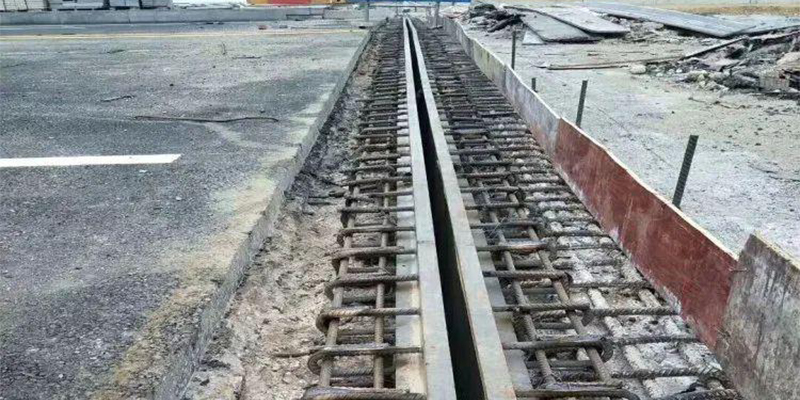In the previous article, we introduced the construction method for bridge expansion joints. Today, let's learn more about the problems and prevention measures of bridge expansion joints.Let's dive in.
Expansion joints of bridges are prone to damage easily be damaged by vehicle loads and the influence of various factors,such as cracking and damage to anchored concrete, jamming of expansion joints, aging of materials, damage to anchors, and damage to rubber strips.

1.Improper design, inadequate design amount, improper selection and fillers such as post-cast concrete and pavement layer materials on both sides have not been clearly specified.
2. The stiffness of the expansion joint device is not sufficient, and the strength of the anchors is inadequate. Due to repeated loading, different levels of damage can occur.
3. Improper construction methods, improper material selection, incorrect spacing, incorrect positioning angle steel, and welding of anchor reinforcement are all issues. The position of the pre-embedded reinforcement may not be accurate, the strength, curing time, cohesion, and flatness of the filled concrete, etc. do not meet the design standards, and the prefabrication and installation of the beam slab do not meet the design requirements.
4. The traffic volume is high, the vehicle speed is fast, there are many heavy-duty vehicles, and the impact force of the wheels can cause damage, shedding, loosening, and even damage to the expansion device, which seriously affects driving safety.
5. Improper daily cleaning and maintenance of the expansion joint.
It's important to reasonably select the expansion joint device to ensure the stiffness of the expansion joint and the strength quality of the anchors. The anchoring of the expansion joint should be able to withstand the influence of machinery, friction, and collision, be firm and reliable, and durable. Construct according to the specifications to make the vehicle run smoothly, strengthen maintenance, and check frequently.
Expansion joints, special-shaped steel and rubber strips, and other accessories that enter the site should be consistent with the design. The length of the expansion joint is measured on the spot by the manufacturer's personnel and processed according to the actual length to eliminate any errors between the design and the actual length, and to facilitate installation. Special-shaped steel should be handled with care during transportation and cannot be damaged or deformed. When stacking, use sleepers to raise it to avoid wind and rain. It can only be used after passing the inspection. The on-site mix ratio and test results of raw materials, reinforcing bars, etc. can only be used after meeting the requirements.
1)Before pouring concrete for the expansion joint, it must be reported to the supervising engineer for inspection and approval. The whole process of pouring concrete must be supervised by the supervisor to ensure that the pre-embedded reinforcement is securely connected to the main beam reinforcement, that the profile beam is level, that the pavement on both sides is smooth, that the formwork is firm and tight, and that the formwork is clean and free of any grooves. To prevent the concrete from entering the inner groove of the steel section, seal it with adhesive tape on the special-shaped steel. Once all the processes have been inspected and qualified, proceed with the concrete construction.
2) If the expansion joint is installed after the pavement has been paved, before paving, it is necessary to clear the reserved gap and embed the foam board first, and then fill the notch with sand bags and graded sand bags. The elevation filled should be controlled to prevent contamination of the pre-embedded reinforcement by the asphalt.
3)The cutting and grooving of the bridge expansion joint shall be cut with a cutting machine according to the width of the reserved notch. When cutting, it's important to note that the incision is intact without gnawing edges and the asphalt concrete and filler in the groove should be removed in time. The inner surface of the notch should be chiseled. When installing, check if the pre-embedded reinforcement in the groove is cracked or broken, otherwise take remedial measures. It should be ensured that the pre-embedded reinforcement is firmly welded to the anchor ring of the expansion joint. If it is found that the steel beam is deformed or the spacing is inconsistent, it shall be corrected. When installing, the center line of the expansion joint seam should coincide with the actual reserved seam center line and be slowly put into the groove, and the deviation shall not exceed the allowable range of the design, and it should be adjusted based on the longitudinal and transverse slopes and elevation. The top surface of the steel beam should be 1-2mm lower than the adjacent asphalt concrete pavement and should not exceed the pavement elevation.
4)The sealing of the formwork for formwork erection and concrete pouring, particularly the curing of the expansion joint after concrete pouring, should be given attention.
The bridge expansion joint is an important part of bridge engineering and its installation quality directly affects the bridge's service life. As long as the above methods and requirements are followed, prevention is the main focus, and effective prevention and control measures are taken to ensure the quality of the bridge expansion joint and make the vehicle drive comfortably and safely.

International Department: Room 2211-2212, Tower C of Wanda Plaza, Tongzhou District, Beijing 101118, China.
+86-13021287080
info@boyoun.cn